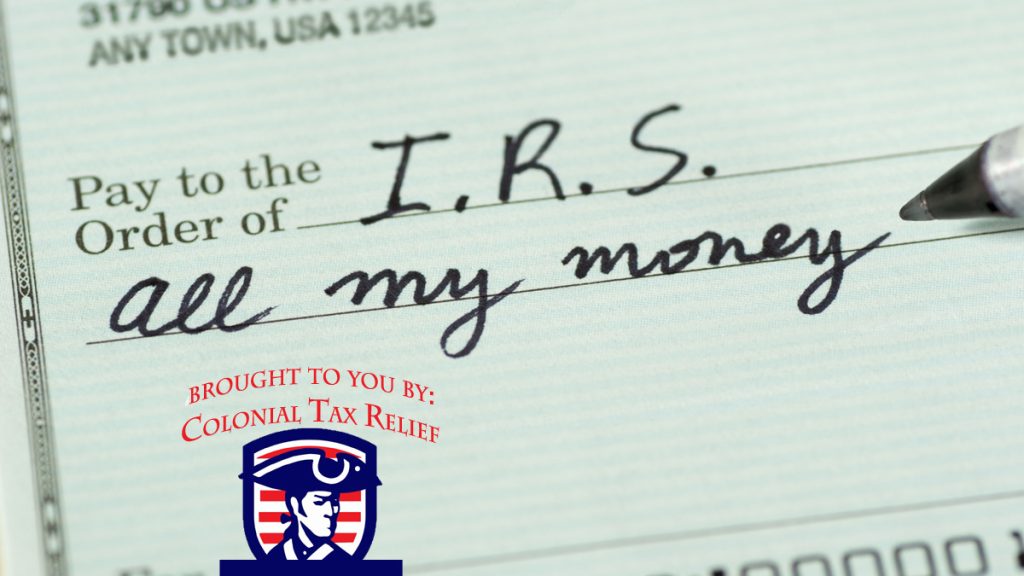Intent to Levy: Everything You Need To Know


Perhaps there’s no greater entity that has the capacity to strike fear in our hearts as does the IRS. After all, the Internal Revenue Service can tap your bank account, seize your assets, and make your life endlessly miserable if you’re not compliant with their rules and regulations. If you’ve received a notice of intent to levy, you know exactly what we’re talking about. Facing an intent to levy from the IRS due to unpaid taxes can be a nail-biting experience, but various programs and options are available to alleviate the burden.
The IRS often provides alternatives, such as installment plans or settlements, allowing individuals to address their tax debt more manageable. Knowing how to respond promptly and exploring these options can help navigate through the complexities of an intent to levy, ultimately finding a feasible resolution for IRS tax debt.
Disclaimer: The information provided in this article is for educational and informational purposes only. It is not intended as legal or financial advice. For tax advice, contact tax professionals such as Colonial Tax Relief.
Call (833) 829-2778 today for tax relief today!
Table of Contents
- What is Intent to Levy
- What is the Purpose of a Levy?
- Is a Levy a Penalty?
- How Many Notices Does the IRS Send Before Levy?
- Types of Intent to Levy Notices
- IRS Letter 1058 Explained
- How to Appeal an IRS Tax Levy
- What Property Can the IRS Levy?
- Learn More About Intent to Levy and How Our Experts Can Help. Connect With Us Today!
What is Intent to Levy
So, what is the “Intent to Levy,” exactly? It is an official notice from the IRS, signaling their intent to seize a taxpayer’s assets for unpaid taxes. Usually delivered through IRS Letter 1058, it warns of imminent action and outlines the owed amount. This notification serves as a final opportunity for the taxpayer to address the debt, presenting their rights and available options.
What is the Purpose of a Levy?
Another great question. A levy’s purpose is to enable the IRS to legally seize a taxpayer’s assets, like bank accounts or wages, as a forceful measure to satisfy unpaid taxes. It represents an escalated action taken when prior warnings have not prompted the taxpayer to address their delinquent tax debt, serving the ultimate goal of tax collection.
Is a Levy a Penalty?
No, a levy is not a penalty in the traditional sense. Instead, it is a legal seizure of a taxpayer’s assets by the government, typically the Internal Revenue Service, to satisfy an outstanding tax debt. While penalties may be associated with unpaid taxes, a levy itself is a direct action taken to collect the owed funds, involving the seizure of assets like bank accounts or wages (yikes!). Penalties, on the other hand, are additional fines imposed for specific violations or failures related to tax obligations.

How Many Notices Does the IRS Send Before Levy?
If you’re in this sticky situation, you might be asking, “How many notices does the IRS send before levy?” Great question. The IRS typically sends several notices before proceeding with a levy. Generally, the process involves a series of warnings to alert the taxpayer about their unpaid taxes and the potential for a levy.
These notices serve as opportunities for the taxpayer to address the issue, explore payment options, or resolve the outstanding debt before more severe measures are taken. While the exact number of notices can vary based on individual circumstances, it’s common for the IRS to send multiple warnings, providing ample chances for the taxpayer to take corrective action and avoid the levy process.
Call (833) 829-2778 today for tax relief today!
Types of Intent to Levy Notices
- IRS Letter 1058: Initial Warning
- The first formal notice indicates the IRS’s intent to levy, providing details on the outstanding tax debt and actions required.
- CP90/CP297: Final Notice of Intent to Levy
- A critical notice was sent after previous warnings, specifying the taxpayer’s rights, available options, and the impending possibility of asset seizure.
- CP91/CP298: Intent to Levy on Social Security Benefits
- Specific to Social Security recipients, this notice warns of the intent to levy a portion of their benefits to satisfy unpaid taxes.
- LT11/L1058(DO): Intent to Levy on State Tax Refund
- Informs the taxpayer about the intention to intercept their state tax refund to cover federal tax liabilities.
- Letter 3172: Notice of Federal Tax Lien Filing and Your Right to a Hearing
- While not directly an intent to levy, it signals the possibility of a future levy, emphasizing the importance of addressing the tax debt promptly
IRS Letter 1058 Explained
IRS Letter 1058 is a crucial document serving as the initial warning of the agency’s intent to levy for unpaid taxes. This formal notice outlines the outstanding tax debt, specifies the actions required to prevent a levy, and emphasizes the importance of prompt response. It marks a pivotal point for taxpayers to explore options, negotiate payment plans, or seek alternatives before implementing more aggressive collection measures.
In other words, if you get an IRS 1058 Letter – don’t ignore the notice! Instead, consider this as a tap on the shoulder to turn things around, seek professional advice, and move forward with your tax matters. Hope is not lost, and help is available. Simply contact Colonial Tax Relief.

How to Appeal an IRS Tax Levy
Here are the steps to appealing an IRS tax levy:
- Review the Notice: Carefully examine the IRS notice, understanding the reasons for the levy and the amount owed.
- Contact the IRS: Reach out to the IRS contact information provided on the notice to discuss the situation and explore possible resolutions.
- Verify Accuracy: Confirm the accuracy of the tax assessment, ensuring there are no errors or discrepancies in the amount owed.
- Request a Collection Due Process (CDP) Hearing: File a timely request for a CDP hearing, allowing you to present your case and propose alternatives to the levy.
- Prepare Documentation: Gather supporting documentation such as financial records, proof of hardship, or evidence of compliance with tax obligations.
- Submit Form 12153: Complete and submit Form 12153, Request for a Collection Due Process or Equivalent Hearing, formally requesting the hearing.
- Attend the Hearing: Participate in the CDP hearing, presenting your case and providing any necessary documentation to support your appeal.
- Consider Appeals Office Decision: Evaluate the decision made by the IRS Appeals Office, and if unsatisfied, explore further appeal options.
- Explore Installment Plans or Offers in Compromise: During the process, discuss and negotiate installment plans or offers in compromise as potential alternatives to the levy.
- Seek Professional Guidance: Consult with a tax professional or advisor for assistance in navigating the appeals process and exploring viable solutions.
What Property Can the IRS Levy?
The IRS has the authority to levy various types of property to satisfy unpaid taxes, including:
- Wages and Salary: The IRS can garnish a portion of a taxpayer’s wages or salary through a continuous levy on their income.
- Bank Accounts: The IRS can seize funds in bank accounts, including savings and checking accounts, through a bank levy.
- Retirement Accounts: While certain retirement accounts may have protection, others, like 401(k) or IRA funds, could be subject to levy.
- Social Security Benefits: The IRS can levy a portion of a taxpayer’s Social Security benefits to cover outstanding tax liabilities.
- Real Estate: The IRS may place a lien on or seize real estate, such as homes or rental properties, to satisfy tax debts.
- Vehicles: Cars, trucks, or other vehicles owned by the taxpayer can be subject to levy.
- Business Assets: For business tax debts, the IRS can levy assets like inventory, equipment, or receivables.
Understanding the breadth of property subject to levy underscores the importance of addressing tax obligations promptly to avoid such actions.
Learn More About Intent to Levy and How Our Experts Can Help. Connect With Us Today!
Take the initial step towards financial relief with Colonial Tax Relief’s Intent to Levy. Fill out the form below to understand how our tax pros can customize a solution for your specific tax challenges, guiding you toward a path of financial stability.







